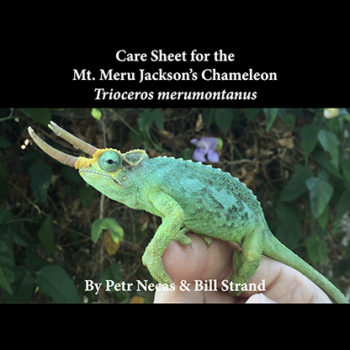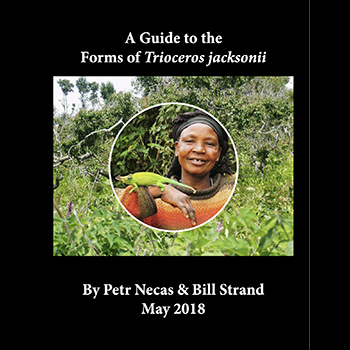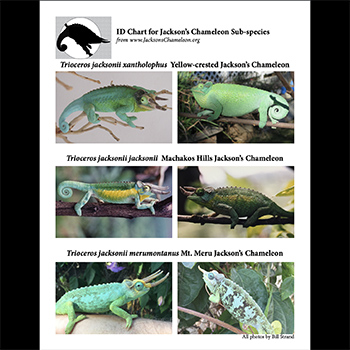Trioceros jacksonii merumontanus Natural History
In the high elevations of Mt. Meru in the country of Tanzania lives a small member of the Jackson’s Chameleon genus. Trioceros jacksonii merumontanus, or the Mt. Meru Jackson’s Chameleon is the only Jackson’s Chameleon to be naturally found outside of Kenya. It was recorded at 7500 feet above sea level. It poses a special challenge to keepers as it is even more dependent on that nighttime drop than its other Jackson’s relatives from lower elevations. This is, more than likely, the reason why it had a reputation for being difficult to raise up from babies.
“Merus”, as they are known by hobbyists, are no longer imported as Tanzania is going into its 3rd year of having a ban on exports. There are still enough pockets of merus in private collections that there may be a possibility of establishing a small sustainable, at least for a few years, captive population. The Meru’s were the smallest of the Jackson’s Chameleon subspecies to be in the hobby. There are reports of an even smaller variety of jacksonii jacksonii that occurs above 3000 meters on Mt. Kenya, but we have not seen that one in the trade.
If you are the detail orientated sort you will notice that the name continues to change between merumontana to merumontanus, to merumontanum and back again. We are waiting for the dust to settle on this one.
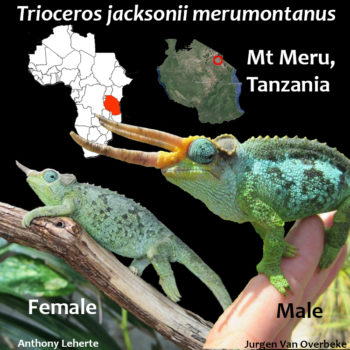
Captive Husbandry
Jurgen Van Overbeke is a chameleon breeder in Belgium who has extensive experience with a wide range of chameleon species. He offers his insight into breeding and keeping Trioceros jacksonii merumontanus.
“Trioceros jacksonii merumontanus is a very beautiful species that comes only from Mt. Meru in the Arusha district of Tanzania. The males have very long horns with respect to their body with a golden crown, bluish eyes and lime green body.
Only lives on Mt Meru and live pretty high. According to my information from people searching for them is that they can be found right below the areas that get frost.
As would be expected from their elevation, they would need mild temperatures during the day, say low to mid 70s, and a substantial nighttime drop. I estimate, at the most, the high 50s at night, but lower would be better. I use the standard ZooMed T8 5.0 UVB bulb on top of their screen cage which they made extensive use of, as well as a 24 watt basking bulb. They do a lot of basking, but I would rather them bask longer to raise their temperature than provide a hotter basking spot due to issue I had with them cooking themselves. There was a curious lack of perception of too much heat which I haven’t figure out yet, but was a real problem.
Breeding is standard for chameleons. They have a gestation of about 6 months and will produce litters of between 8 to 15 in the largest females. The babies come out quite small, as one would expect so one must be prepared with appropriate size food. Drosophila melanogaster is a good start.
Merus are very sensitive to supplementation and develop edema quickly. My nutrition regimen was to give the feeder a rich gutload of bee pollen, fruits, and vegetables. The only supplementation I give is calcium once a week with a little bit of magnesium. I would give that twice a week for gravid females and babies.
Trioceros jacksonii merumontanus is a fantastic and beautiful species!“

Male Mt. Meru Jackson's Chameleon
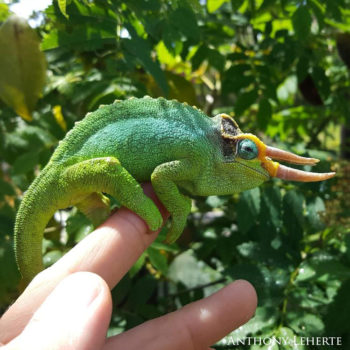
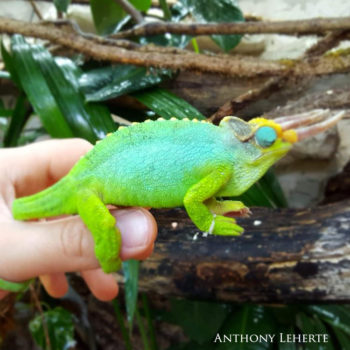
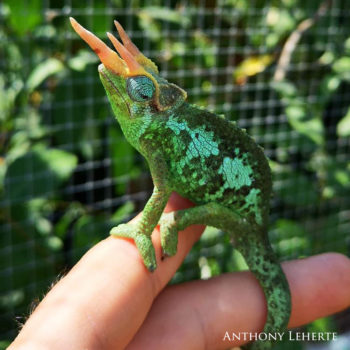
Female Mt. Meru Jackson's Chameleon

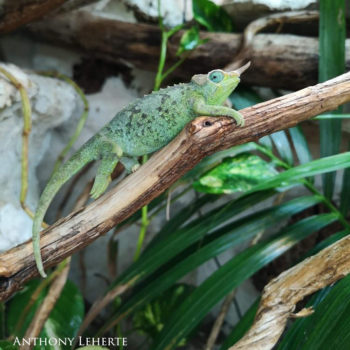
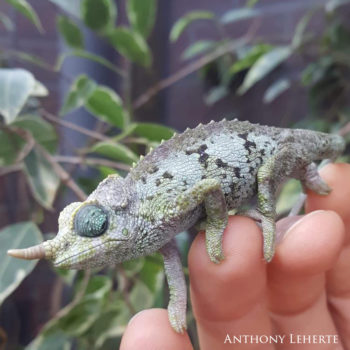


Jurgen Van Overbeke
Outdoor aviary for Mt. Meru's Jackson's Chameleons
Jurgen describes his friend’s backyard Jackson’s Chameleon enclosure.


